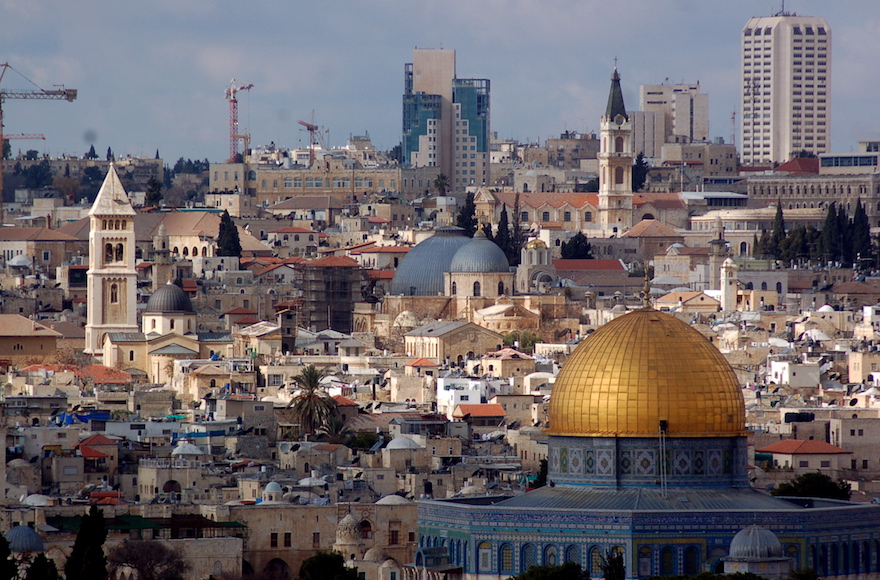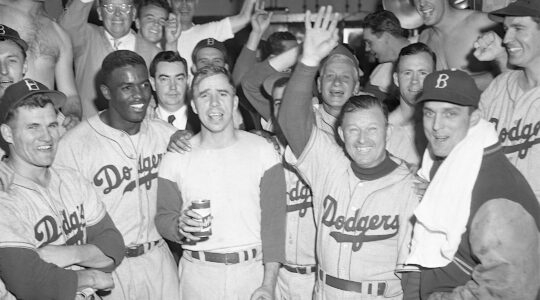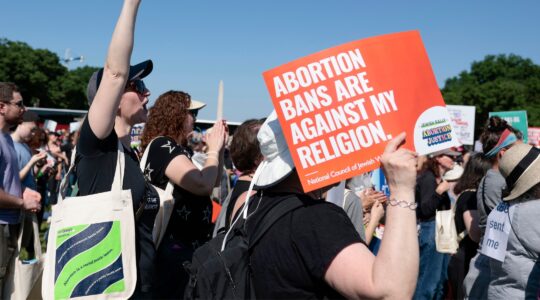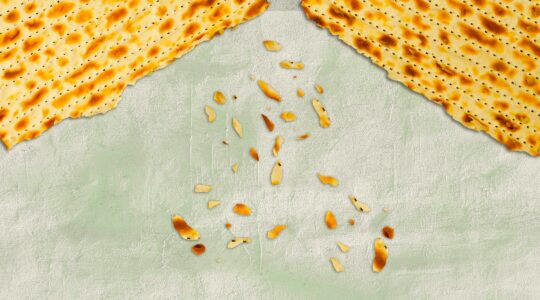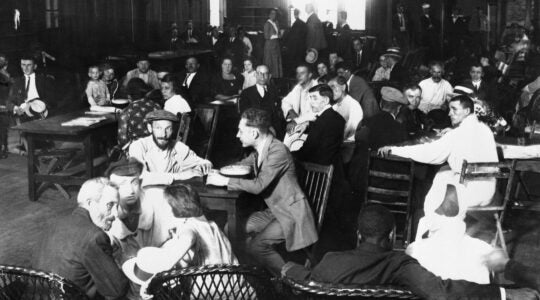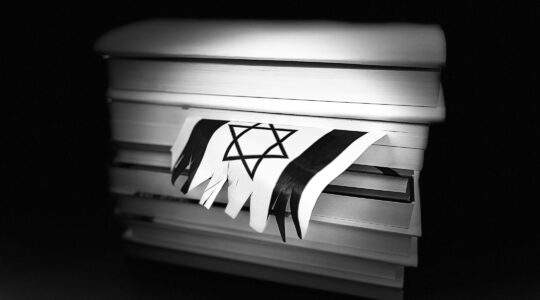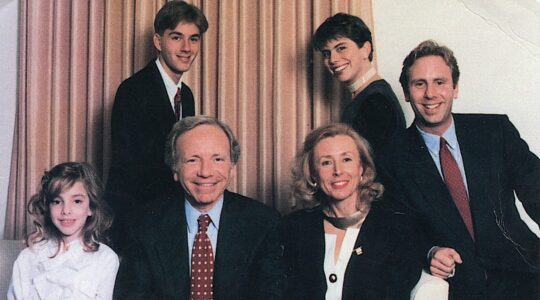(JTA) — E.B. White famously wrote that there are “roughly three New Yorks”: the one of the native New Yorker, the one of the commuter, and the New York of the “person who was born somewhere else and came to New York in quest of something.”
To which a resident of Jerusalem might respond, “Only three? Lucky you.”
Jerusalem is messy, in the best and worst sense of the word. It’s a city of secular intellectuals and insular haredim. It’s the seat of Israel’s government and flypaper for the dreamers, fanatics, seekers and tourists from three major religions and dozens of cults, sects, denominations and movements.
And of course it’s a city of Jews and Arabs, roughly and unmistakably divided into west and east, with the Old City as a sort of (forgive the imagery) bathtub drain into which both sides swirl, mix and boil.
Anyone who likes to talk about Jerusalem as “undivided” is either being delusional or hopelessly optimistic. And that’s not just because the city is diverse, or incoherent, or less a typical city than a sprawl of boroughs or villages that somehow share a city hall. You could say the same thing about New York.
“Undivided” is little more than a slogan because no one, least of all the Israelis who run the place, can agree what Jerusalem is. From the 1948-49 War of Independence until the Six-Day War in 1967, Jerusalem was indeed divided: Jordan occupied the Old City and areas to the north and south, and Israel made its capital in the western and southern parts of the city, with a narrow road acting like an umbilical cord between the Israeli side and the Jewish enclave on Mount Scopus.
The wall dividing east and west was torn down after the Six-Day War, and Israel celebrated the city’s “reunification” by annexing the Old City and eastern Jerusalem and taking responsibility for the 66,000 or so Arabs living there. The new boundaries added some 40 square miles to the municipality, including familiar Jerusalem neighborhoods like Pisgat Zeev, Gilo and Ramat Alon. Much of the international community considered — and still considers — these as illegal settlements, although the Israelis insist their claims to Jerusalem and its environs are longstanding and you can’t “occupy” territory that wasn’t under the legitimate sovereignty of any state in the first place.
By 1993, Jerusalem’s municipal limits had been expanded to nearly as far south as Bethlehem, west to include majority Arab neighborhoods like Abu Dis and as far north as the Atarot, or Qalandia, airport, now an army base. The Jerusalem municipality, now 77 square miles, has a Palestinian population of 293,000, or 37 percent of the city’s total. The vast majority of this population does not vote in municipal and national elections because they never accepted Israeli citizenship.
In October, the Knesset set aside a bill — reportedly under pressure from the United States — that would have redrawn the borders to make the Jerusalem municipality ever larger, absorbing the Jewish communities of Maale Adumim, Beitar Illit and Efrat along with the Etzion bloc of settlements.
Declarations that Jerusalem should remain the “undivided capital of Israel,” like a unanimous Senate resolution passed earlier this year marking the 50th anniversary of the reunification of Jerusalem, rarely specify what they mean by Jerusalem. In his announcement last week recognizing Jerusalem as Israel’s capital, President Donald Trump did not use the phrase “undivided Jerusalem,” and indeed insisted that the United States is “not taking a position of any final status issues, including the specific boundaries of the Israeli sovereignty in Jerusalem or the resolution of contested borders.”
That makes sense because Israel’s sovereignty and the borders of any future Palestinians state are what the peace process is supposed to be about.
Arguments for keeping Jerusalem “undivided” are both emotional and practical. The idea of a city cleaved in two is both aesthetically and pragmatically troubling. “Without fail, divided cities suffer either intense economic stagnation or general atrophy,” Nathan Diament, executive director for the Orthodox Union Advocacy Center, has written.
Critics of the term “undivided Jerusalem” say it is a slogan that hides ugly truths about occupation and disenfranchisement.
“Fifty years on, Jerusalem is more binational, more contested and more divided that at any point since 1967,” writes attorney Daniel Seidemann, who heads the the Israeli advocacy group Terrestrial Jerusalem. “There are two national collectives in Jerusalem, one endowed with political rights and the other permanently disenfranchised and disempowered.”
And certainly some ideologues use it that way, drawing their own lines in the sand (and borders on a map) and daring anyone to cross them.
Is it possible to imagine an “undivided Jerusalem” that also accommodates Palestinian aspirations for a state and capital of their own? It is, but it will take an honest discussion of what “Jerusalem” is and isn’t.
Like Trump, no Israeli and no Jew elsewhere wants to go back to the pre-1967 reality, when Jordan blocked Jews from the Western Wall and limited Christian and even Muslim access to holy sites.
And no one expects Israel to unilaterally give back all that it won and consolidated in war and built in peace — not just the current government, which promotes a Greater Jerusalem and is indulgent of plans to build housing units in areas that Palestinians and their international backers consider disputed, and not any government one could foresee. That’s why credible peace plans have called for a consolidation of surrounding Jewish neighborhoods within Israel, with various land swaps to accommodate the Palestinians.
Meanwhile, as long as the Palestinians insist that no part of Jerusalem is Israeli, peace is impossible. If the Palestinians are to achieve their own state, they, too, will have to accept the reality of what Jerusalem is and isn’t.
But even short of a comprehensive peace plan, it is worth asking what is meant by “Jerusalem.” If you think it is the current sprawling, hand-drawn conurbation, with its Israeli majority and large Palestinian minority, you’ll need to justify the contradictions. And if you think it can be divided in a way that lets both sides thrive, you’ll have to take responsibility if it doesn’t. In the biblical and rabbinic imagination, the city has always been as much an idea as a reality — an earthly Jerusalem (Yerushalayim shel matah) and a heavenly Jerusalem (Yerushalayim shel maalah). Hopes for peace rest on wise leaders who understand the difference.

